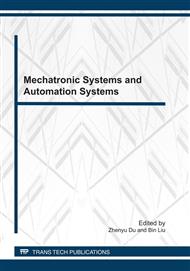p.332
p.336
p.341
p.345
p.350
p.354
p.358
p.363
p.367
A Study on the Stability of Innovation Network in Tech-Typed Small and Medium-Sized Enterprises Based on Cooperative Game
Abstract:
In the new condition of improving tech-typed small & medium-sized enterprises, it has important realistic meaning and theoretical significance how to construct a stability innovation network to ensure the enterprises innovation ability, and format and optimize innovation mechanism. In this paper, cooperative game method is used to describe and script the forming process of cooperation mechanism among network members, and its stability is analyzed and discussed. On the basis of this, it points out that only in cooperation, the stability of innovation network can be ensured, and it will make the all sides of innovation network get the largest benefits.
Info:
Periodical:
Pages:
350-353
Citation:
Online since:
June 2011
Authors:
Price:
Сopyright:
© 2011 Trans Tech Publications Ltd. All Rights Reserved
Share:
Citation:


